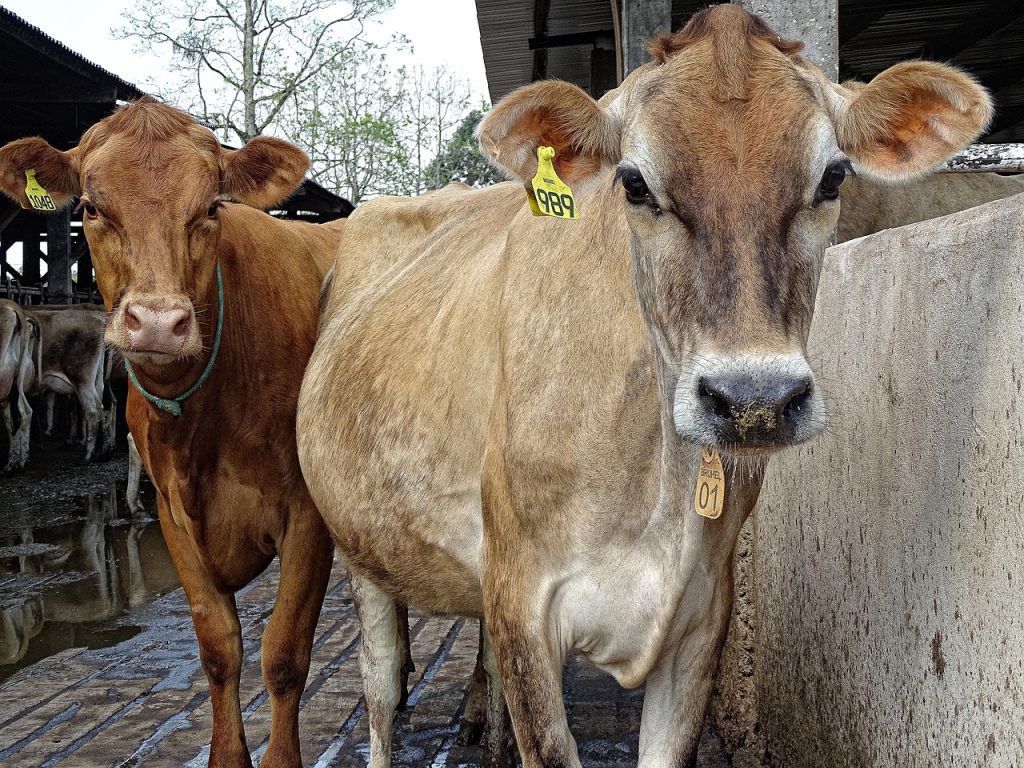All fields are required
Posted in Food Safety,Our Blog,Raw Milk on September 30, 2024

Despite a lull in bird flu cases over the summer, new cases of bird flu in dairy cows continues to rise. New Mexico has recently detected new cases. Their first since April. Meanwhile, three new dairy farms in California have recently been added to the list.
With the three new California Central Valley area farms added to the database, the total case number has risen to 203. This spans 14 states, including California, Colorado, Idaho, Iowa, Kansas, Michigan, Minnesota, New Mexico, North Carolina, Ohio, Oklahoma, South Dakota, Texas, and Wyoming.
In the last 30 days, new cases from Idaho, Colorado, Michigan, New Mexico, and California have been reported.
On August 30, 2024, the U.S. Department of Agriculture (USDA) Animal and Plant Health Inspection Service (APHIS) confirmed another bird flu outbreak in New Mexico. This ended the state’s five-month streak. The last case of bird flu in dairy cows in New Mexico was the middle of April.
This week, the California Department of Food and Agriculture (CDFA) announced that three more Central Valley area dairy farms detected bird flu after herds began showing signs of the illness.
This brings the state’s total number of affected farms to six.
In a Bovine Health Alert, the agency the agency confirmed this report. CDFA explained what is being done to help the spread of illness and put consumers at ease over concerns of the virus spreading to the milk supply.
“All affected dairies have been placed under quarantine and enhanced biosecurity measures are in place to prevent the spread of the virus. Sick cows are isolated and are being treated at the dairies. Most infected livestock and dairy cattle can fully recover from HPAI [Highly Pathogenic Avian Influenza or bird flu] infection within a few weeks.”
With California providing most of the nation’s milk supply (one fifth of all milk sold in the United States), consumers have shown concern over potential risks of transmission in milk or reduced supply due to illness in dairy cows.
CDFA states that, “California’s supply of milk and dairy foods is safe and has not been impacted by these events. Healthy cows have been cleared to continue shipping milk for pasteurization. Pasteurization of milk is fully effective at inactivating the virus so, there is no cause for concern for consumers from milk or dairy products.”
While “highly pathogenic” is in the proper name for the bird flu virus, the highly contagious nature refers to poultry. While not impossible, human transmission is rare.
“No human cases of HPAI have been confirmed in California related to this incident,” the agency said in their report.
In response to concerns about bird flu making it into the food supply, regulatory agencies have been surveying retail dairy products.
The latest of these surveys was published last month from samples taken June 18 through July 31, 2024.
These samples were obtained from products acquired at retail locations.
Products included:
These samples were collected by a third party and packaged to remove identifying manufacturing marks and tested by the USDA.
No viable virus was detected in milk samples
No viable virus was detected in those milk samples.
“These results strengthen previous assessments that commercial pasteurization inactivates the H5N1 [bird flu] virus.
Pasteurization is a heat treatment process used to kill harmful pathogens in milk, juice, eggs, and other food products.
Invented in 1864 to reduce spoilage in beer and wine, Louis Pasteur paved the way for safe dairy consumption.
Studies have found that time and temperature are key aspects of successful pasteurization. These two variables enable a kill step for harmful germs but retains nutrition and taste of the product.
There are three methods to safely pasteurize milk.
All three methods produce safe results.
Is it possible that these recent clusters of bird flu signal a resurgence of cases to come? Much like the beginning of the outbreak?
It is possible.
Federal officials have announced that it is too soon to determine if the virus is ebbing in cattle or if we could see another uptick in bird flu in dairy cows soon.
With schools resuming and greater demand for milk picking up in the fall, potential cattle movement between states to meet that demand may play a role in that outcome. Initial spread of the virus in dairy cows was exacerbated by this movement
If you’d like to know more about food safety topics in the news, like “Cases of Bird Flu in Dairy Cows Continues to Rise as New Mexico Detects New Cases and Three New Farms in California are Added to the List,” check out the Make Food Safe Blog. We regularly update trending topics, foodborne infections in the news, recalls, and more! Stay tuned for quality information to help keep your family safe, while The Lange Law Firm, PLLC strives to Make Food Safe!
By: Heather Van Tassell (contributing writer, non-lawyer)